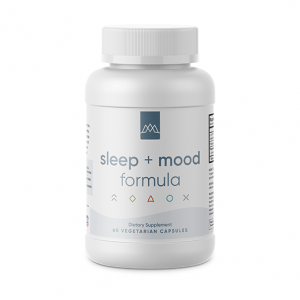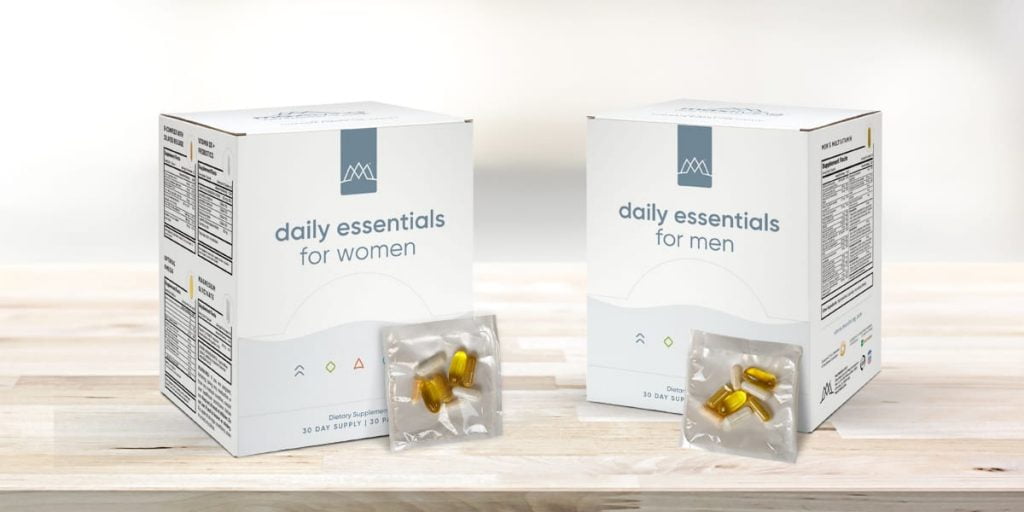You’re not alone if you struggle to stick with New Year’s resolutions.
“Studies have shown that less than 25% of people actually stay committed to their resolutions after just 30 days, and only 8% accomplish them,” says Ashira Prossack in Forbes.
If you’re like most people during the holidays, you sometimes overindulge. One night, after several servings of your favorite dessert or comfort food, you resolve that on January 1, you’ll finally get on track and start eating healthier.
Sound familiar?
Health and fitness goals are high on most people’s New Year’s resolution lists. But as we all know, those resolutions are far easier to create than actually do or maintain.
That’s why you want to shift perspective. Whereas resolutions are vague, Prossack says that goals are concrete. The good news is that you can take action steps and concrete goals to make those goals happen.
This year, let’s ditch those same stagnant resolutions! Instead, we create solid health goals. To do that — and get results — you want to create the right foundation to make those goals happen.
These seven strategies provide a “back to basics” approach for your 2020 New Year’s Resolutions. Below each goal, you’ll find three strategies to put that goal into action.
You don’t need to tackle all of them at once. Find one or two that work for you, and incorporate the simple strategies below to make these resolutions a reality.
Goal #1: Take a Proactive, Can-Do Approach
 A growth mindset takes a “make it happen” attitude. With our health and our lives, we can always improve. We can master new tasks, embrace challenges, and learn new things. And part of that mindset is a “bounce back” attitude.
A growth mindset takes a “make it happen” attitude. With our health and our lives, we can always improve. We can master new tasks, embrace challenges, and learn new things. And part of that mindset is a “bounce back” attitude.
With New Year’s resolutions, you’ll hit some roadblocks along the way. But when you have the right mindset in play, you’ll be able to get through those hurdles and create your health goals.
- Find a like-minded community. Support to help you reach your goals gets you there faster and helps you maintain those goals. Researchers found that older, overweight or obese adults could significantly reduce body weight, for instance, with a community-based weight loss programs.
- Plan ahead. One study found that planning ahead — in this case, determining portion size, pre-planning meals, and being mindful about eating — helped people more effectively manage their weight. You can’t control everything, but determining what you can control helps make your goals a reality.
- Consider chiropractic care. A chiropractor accounts for your entire body’s health and wellbeing. Science shows that chiropractic care provides a safe, effective approach compared with conventional treatments to manage pain and claim vitality, optimal health, and longevity. Chiropractors can also create a customized dietary and lifestyle plan that helps you maintain that healthy mindset and sustain momentum.
Goal #2: Focus on the Core or Advanced Plan
You probably have a few pounds — or more than a few — to lose among your New Year’s resolutions. But what plan should you choose? There are so many, with contradictory claims and sometimes-confusing advice.
At Max Living, we take a grounded, science-based approach to eating. Rather than chase the latest trends, we combine research with the knowledge that working with thousands of clients can bring.
From that expertise, we’ve developed two plans that will help you lose weight and equally important, maintain that weight loss. When you lose weight, everything in your life gets better. Maintaining your goal weight lowers the inflammation and other factors that drive diabetes and every other disease.
Depending on your goals, choose our Core or Advanced Plan. Both can help you lose weight. The Advanced Plan is a bit more restrictive to help manage the inflammation that plays a role in most diseases.
- Commit to your goals. Work with your healthcare practitioner to determine what health goals you need to achieve. Your might include losing 20 pounds, lowering your blood sugar levels, building more muscle, protecting your bones, or reducing your risk of diabetes or other diseases that run in your family. Whether you commit to the Core or Advanced Plan will depend on these goals.
- Crowd out, don’t deprive. Putting pressure on yourself to eat more healthy foods at the expense of your favorites can backfire. Instead, fill your plate with more vegetables, low-sugar fruits, and other healthy foods. You’ll find yourself full faster and less likely to grab sugary snacks later.
- Make lateral shifts. Think about your favorite foods. You’ll probably find a healthier version of that favorite here. Craving hot chocolate during the chilly months? Try our Coconut Milk Hot Cocoa. Want some crunch in your dinner recipe? Swap out the pizza or tacos for our Taco Pie. We even have recipes for Healthy Southern Biscuits and Zucchini Fries!
Goal #3: Fit in More Exercise
 The right kind of exercise, in just the correct amounts, can help you maintain your health goals. Exercise is preventative. Consistent exercise will help you lose weight, feel better, reduce your disease risk, and so much more.
The right kind of exercise, in just the correct amounts, can help you maintain your health goals. Exercise is preventative. Consistent exercise will help you lose weight, feel better, reduce your disease risk, and so much more.
Committing to and maintaining your fitness plan becomes key to getting the results you want.
- Find something fun. If exercise feels like a massive chore, you’ll blow it off at the first opportunity. Move more, and make that movement enjoyable! Dancing, spin class, a yoga class with upbeat music, or a high-energy 20-minute burst training boot camp are great ways to fit in exercise and have fun.
- Get a friend or loved one involved. Going at it alone when you’ve committed to a morning run or after-work workout can be daunting and easy to blow off. Find a fitness friend — maybe your bestie, a neighbor, or your significant other — to hold you to your commitments, challenge you to do better, and hold you accountable on those days you’d rather watch Friends reruns.
- Create steady, solid goals. Many people over-commit or feel overly confident during the beginning of a fitness routine, but quickly get burned out or distracted. Work with your healthcare practitioner to create a fitness plan tailored to your needs that includes steady, consistent, attainable goals. Little things add up quickly!
Goal #4: Manage Stress
About 43 percent of adults suffer stress-related health problems including anxiety, skin problems, headaches, diabetes, asthma, and heart problems.
Equally alarming, 75 – 90 percent of all doctor’s office visits are for stress-related ailments and complaints.
You can’t eliminate stress, but you can find strategies to minimize its impact.
- Be mindful when you eat. Mindfulness can provide all sorts of benefits, including lowering anxiety and depression while boosting your health. A good place to begin practicing is the dinner table. Take a few moments before your meal to offer gratitude. Eat slowly and savor every bite. Mindfulness at meals will spill over into other areas of your life.
- Find a de-stressor that works for you. How you manage stress depends on what works for you. While yours might be a Vinyassa flow class, yoga can actually stress some people out! Your way might instead be mindfulness, meditation, deep breathing, Emotional Freedom Techniques or tapping, walking your terrier around the block, or laughing hard with your best friend. Find that de-stressor and do it regularly!
- Find stressful patterns and dial them down. Your stress moments might come in the morning when you’ve got a thousand duties to finish before driving to the office. Or stress might come in the evening when you get home from work and your kids haven’t finished their chores. Notice what time it happens most and find ways to reduce that stress. That could mean laying out things the night before or finding an end-of-the-day ritual that helps you unwind.
Goal #5: Optimize Sleep
 Over one-third of American adults don’t get enough sleep regularly. If you’re 18 – 60, you need at least seven hours every night. Less than that and you might increase your risk of obesity, diabetes, high blood pressure, heart disease, stroke, and mental problems.
Over one-third of American adults don’t get enough sleep regularly. If you’re 18 – 60, you need at least seven hours every night. Less than that and you might increase your risk of obesity, diabetes, high blood pressure, heart disease, stroke, and mental problems.
Great sleep doesn’t just happen. You’ve got to be proactive to make it happen.
- Turn off electronics one to two hours before bed. That email will still be there in the morning, and you’re better off getting sleep rather than learning what your receptionist had for dinner on Instagram.
- Find a sleep ritual. Yours might include a hot bath and chamomile, some yoga, or a good book. Establishing this routine will help you unwind and help you sleep better.
- Keep your sleep consistent. Sleeping in on the weekends or working late into the weeknights can throw off your sleep, leaving you groggy and reaching for caffeine the following morning. Life happens, and you won’t be perfect. But as much as possible, keep the same sleep hours every night.
Even with the best strategies, sometimes falling and staying asleep can be tough. Use a sleep supplement if you need it.
Goal #6: Connect and Find Community
Finding that connection — with our family, friends, colleagues, and significant others — makes life better. When we form these relationships, our health can also improve.
Dozens of studies show that people who have satisfying relationships may have happier lives, fewer health problems, and live longer.
- Find your purpose. Research shows that when you find your purpose, you can reduce stress levels, cope better, and make healthier choices. You’re healthier, happier, and you wake up every morning focused and ready to handle anything life throws your way.
- Strengthen family bonds. Families who work together to establish healthy eating and exercise strengthen those healthy habits. Make one evening every week a family gathering night. Get everyone involved in creating a healthy dinner, play board games, and keep the conversation lively.
- Find gratitude. Gratitude improves well-being. You’re happier, less likely to have mood disorders, and maintain better relationships. But finding gratitude can also improve your physical health. People who feel grateful may have fewer health problems like headaches and digestive issues.
Goal #7: Cover Your Nutrient Bases
Even with the best diet, exercise, and lifestyle modifications, you might not be getting sufficient amounts of vitamins, minerals, and other nutrients to thrive.
American soil contains fewer vitamins and minerals today than in decades past. Because of lower nutrients but also many other reasons, people get fewer vitamins and minerals from produce today.
We also eat fewer foods that lower inflammation. The anti-inflammatory omega-3 fatty acids in foods like cold-water, wild-caught seafood can lower blood pressure, reduce your risk of heart attack and stroke, and so much more.
Talk with your healthcare practitioner about creating a nutrient plan that works for your condition. For almost everyone, these essentials cover the nutrient bases you may not be getting from food.
- Take a multivitamin-mineral. Our Core and Advanced Plans have the ideal amounts of nutrients. Even then, you might not be getting the perfect amounts to thrive. That’s where a multivitamin-mineral can help: It provides the nutrient bases you might not get from food. Everyone benefits from taking a good multivitamin-mineral.
- Reduce inflammation. Chronic inflammation plays a role in obesity and nearly every other disease. Eating cold-water, wild-caught fish regularly can lower inflammation, but most of us don’t eat these regularly. A quality omega-3 fatty acid supplement can improve your skin, your sleep, your weight loss, and so much more.
- Sleep better and manage stress better with this mineral. Among its many roles, magnesium helps your muscles contract, balances blood pressure, helps maintain healthy blood sugar levels, and supports energy production. Getting the right amounts can help lower anxiety and stress levels as well as improve your sleep. Almost half of us don’t get enough magnesium from food, making supplementation ideal.
Who has time to count, sort, or determine exactly how much of a supplement to take?
We’ve simplified that task dramatically with our Daily Essentials Packets for Men and Women. These packets contain a multivitamin, omega-3 fatty acids, and specific nutrients — like vitamin D, magnesium, and a B complex — that even the healthiest diets can lack.
We’ve even custom-tailored our packets to address the individual needs that men and women have to feel healthy, happy, and vibrant at any age.
With these seven strategies, you have everything you need to make your health and fitness resolutions a reality. Remember that when you prioritize your health, everything in life gets better.



